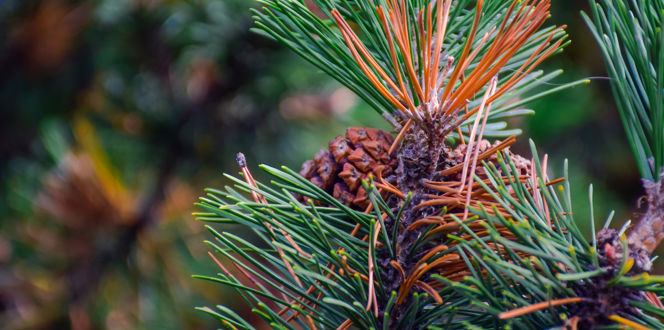Winter Desiccation Description:
Winter desiccation is a winter injury condition affecting primarily evergreen shrubs and trees. Winter desiccation occurs most often when soil moisture is low or dry. Heavy winter winds and sun can accelerate water loss and lead to this condition.
Hosts:
Although all trees lose water (even during winter), trees with shallow root systems, such as fir, pine and spruce are especially susceptible. Other affected species include arborvitae, euonymus, holly, juniper, magnolia and yew.
Biology & Symptoms:
Symptoms of winter desiccation tend to show up after the fact—such as the following year. Affected trees and shrubs may look fine at first, but will eventually turn reddish-brown. Look for dry needles, leaves and twigs, as well as potential dieback in severe cases.
Management:
The simple solution for winter desiccation is this: water during dry periods. In fact, keep soil moist to 18-24 inches deep until first freeze. Water only when temperatures are above freezing and the ground isn’t frozen. Protecting tender plant tissue by coating it with anti-desiccant spray may be an additional option.





